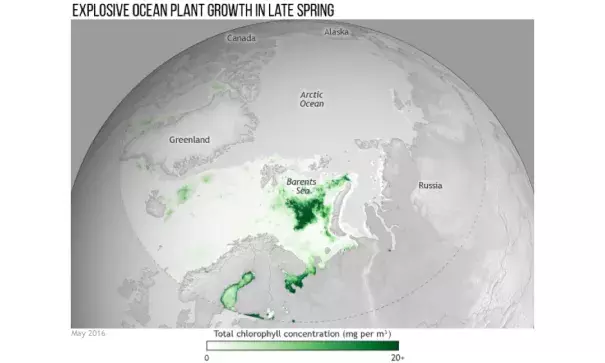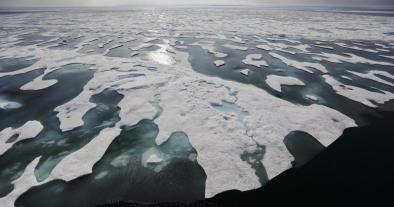Ocean plant growth blooms in springtime as Arctic sea ice thins

Like plants on land, plants in the ocean use chlorophyll to convert carbon dioxide to sugar and oxygen through photosynthesis. In the Arctic, the rate at which ocean plants convert CO2 to organic material—the region’s net primary productivity—has increased over the past 13 years, especially in the spring when ice in the Arctic is thinner and younger than it’s ever been.
The map at right shows total chlorophyll concentration across the Arctic in May 2016, based on NASA satellite observations. The darker the green, the higher the concentrations. Light gray indicates areas where there was no data due to clouds or ice. The most explosive growth was in the Barents Sea, where chlorophyll concentrations averaged more than 14 milligrams per cubic meter higher than the 2003-2015 average.
Massive early-growing-season blooms like the one in May 2016 are helping to drive long-term changes in the Arctic Ocean.
Related Content



